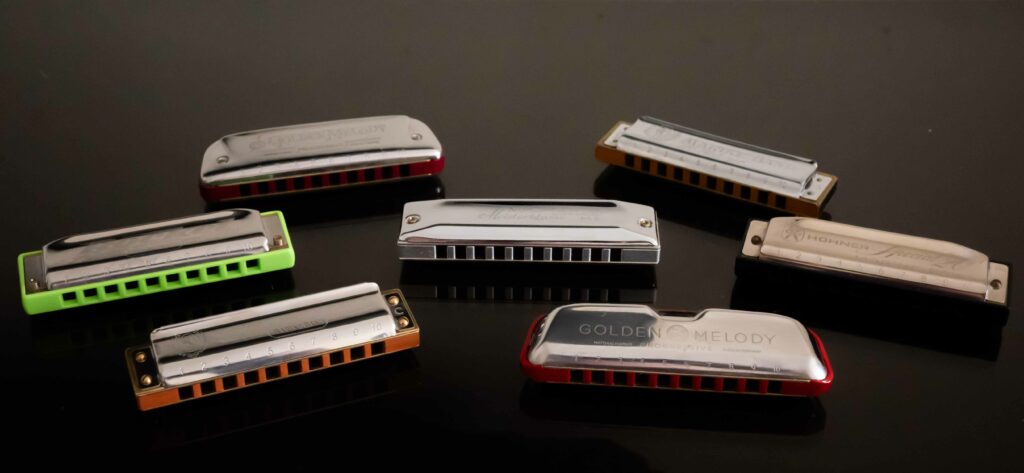
Hohner is probably the most well know harmonica manufacturer. Their harmonicas have help writing the legend of the Blues. All the Blues Legend were playing Hohner Harmonicas: Little Walter, Sonny Terry, Sonny Boy Williamson, …. The Marine Band Classic was “The Legendary Bluesharp” with supposedly a specific sound thanks to its temperament (with “flat” 5 draw and 9 draw designed to make the chords sound better in 2nd position) and to its construction.
How has Hohner managed the transition from old traditional blues playing to modern playing? Let’s review its current line of diatonics!
Hohner Marine Band Classic (33€)
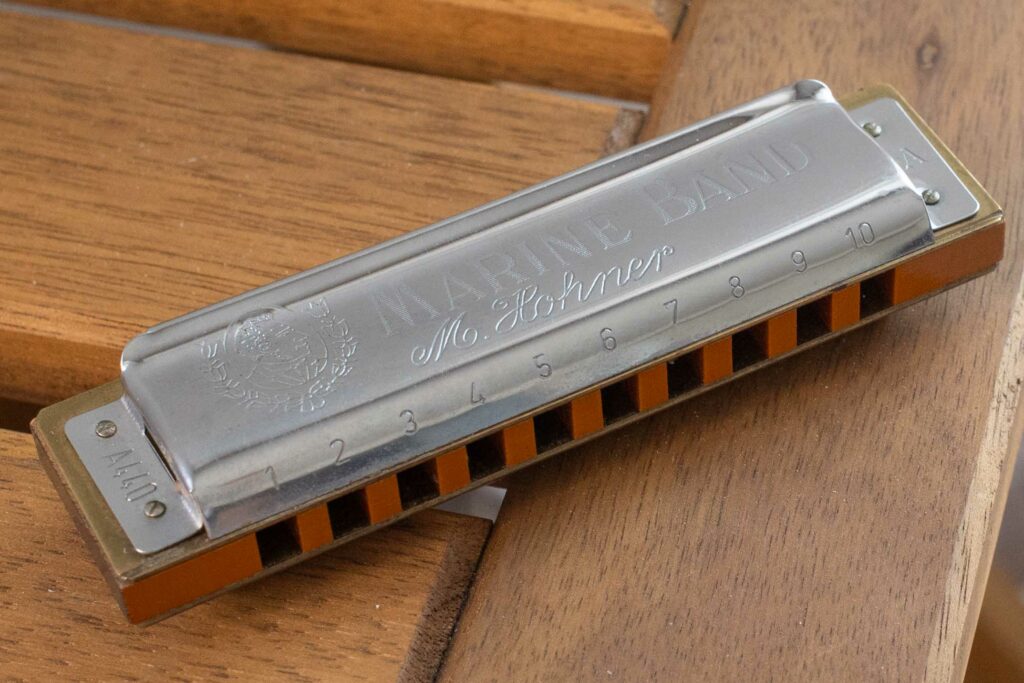
The Legend … and clearly an outdated instrument today! Its construction with nails (the covers are nailed to the comb) is a non-sense as it clearly makes opening the harmonica for gapping a struggle. And without the possibility of gapping the reeds, the player must rely on the factory gapping … which is neither consistent nor optimized for modern playing.
We understand that the legendary status of this harmonica kind of oblige Hohner to keep it in its product line. It probably even still sells quite well due to the legions of “traditional blues players” praising this piece of the past and of guitar players who just want to blow like Bob Dylan. And we’re totally fine with that.
But modern harmonica players should simply pass their way and turn to the modern line from Hohner.
Hohner Big River Harp (25€)
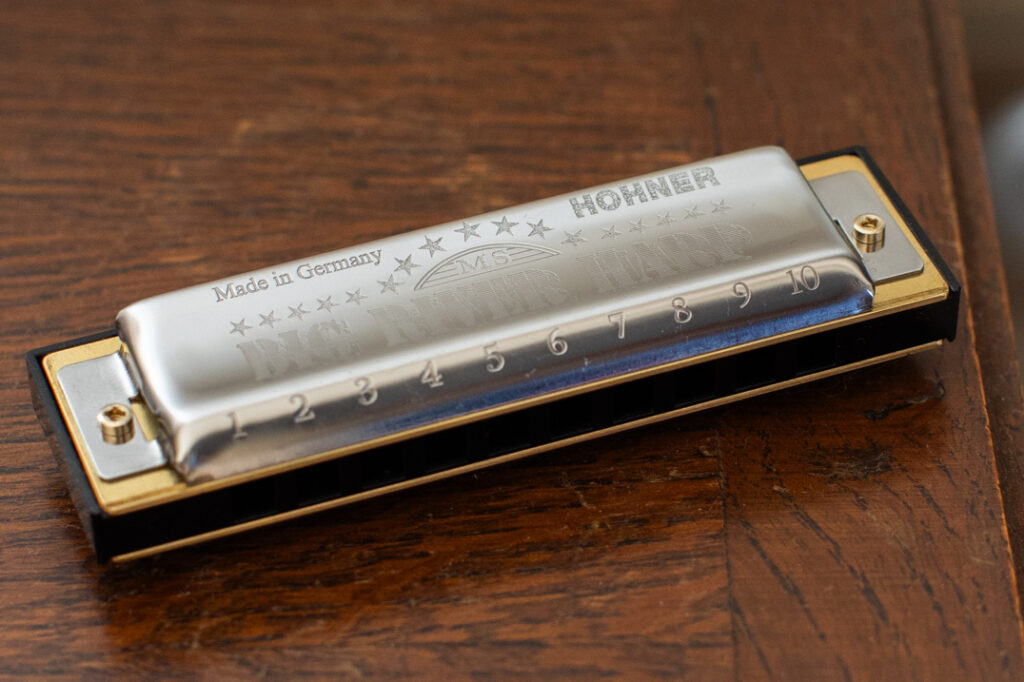
Hohner decided to drastically change its product line in the end of the 80’s/beginning of the 90’s. They tried to replace their “classic handmade” instruments by modern versions of them in what they called a Modular System line, produced mechanically: all the parts (reed plates, covers, combs) were interchangeable between the different products of the MS line.
At first all the instruments but the Golden Melody were changed: Marine Band, Blues Harp, Special 20, Pro Harp, Meisterklass. But the reaction of the buyers was clearly not great. It could be due to a loss of quality (see the Marine Band Deluxe review below) or simply to the fact the harmonica players didn’t want to see their favorite instrument change. Or probably a bit of both.
Hohner decided to scale back and relaunch the Marine Band and Special 20 in the old handmade version. The Blues Harp, Pro Harp, Meisterklass and the new low priced Big River were kept in the MS line.
We were a bit skeptical when we decided to buy and try this Big River. Its price made us fear it would similar to the Blues Band and the likes, which we don’t consider being real instruments (too leaky, not really playable even for basic music).
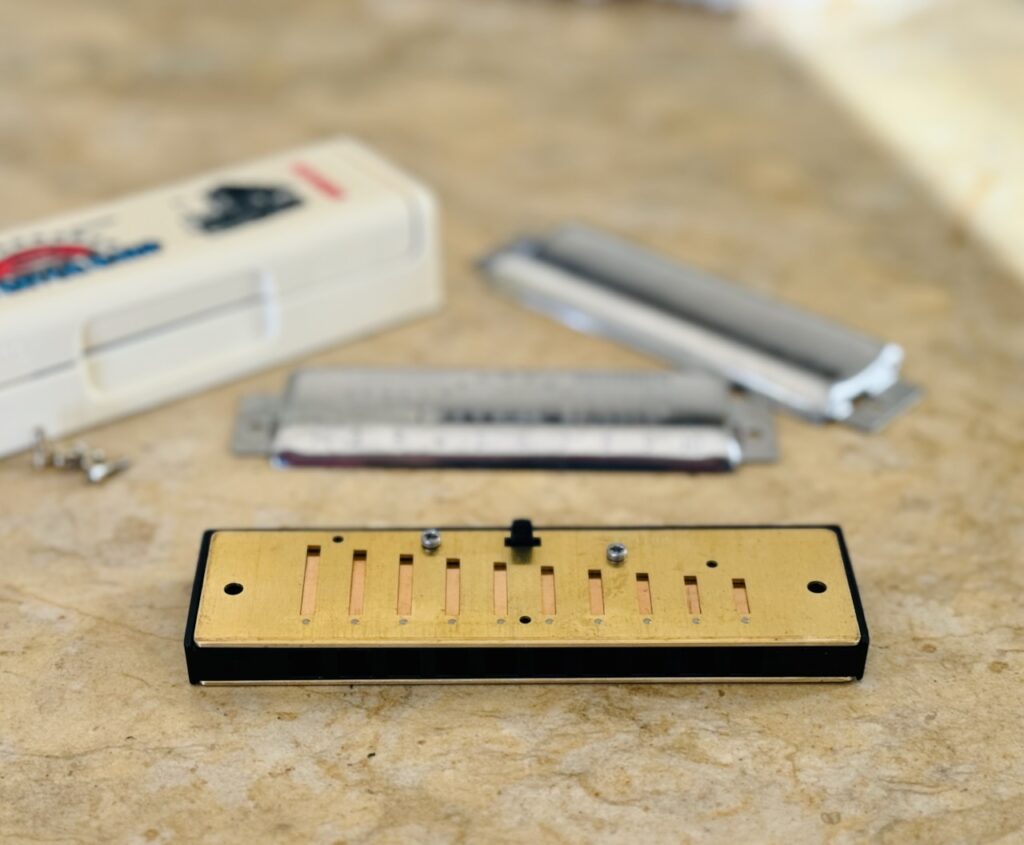
But we were actually quite pleased when we tried it. While not really good out of the box (the draw bends where there but the blow bends not really, and the harp was a bit leaky), this Big River is playable chromatically once gapped and treated with nail polish on the overdraws. Not very responsive, but really playable.
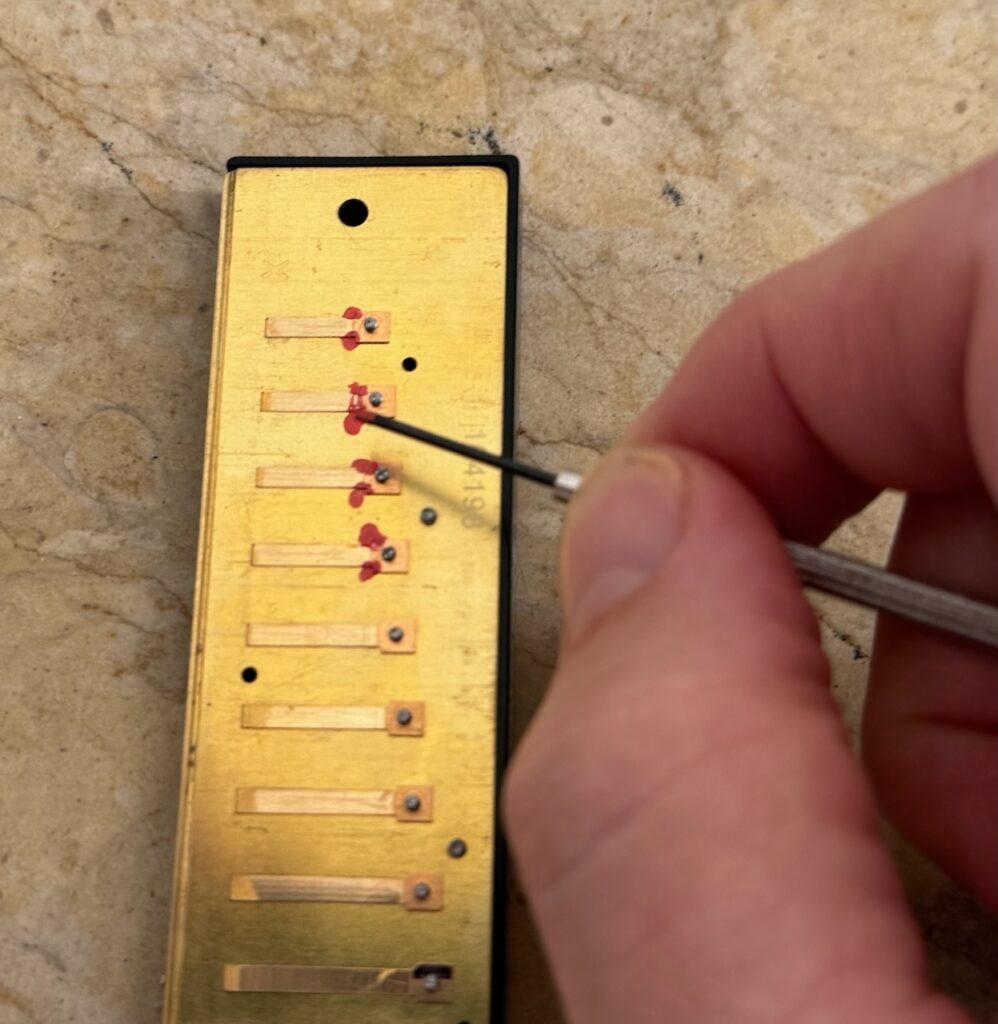
Blues Harp MS (35€)
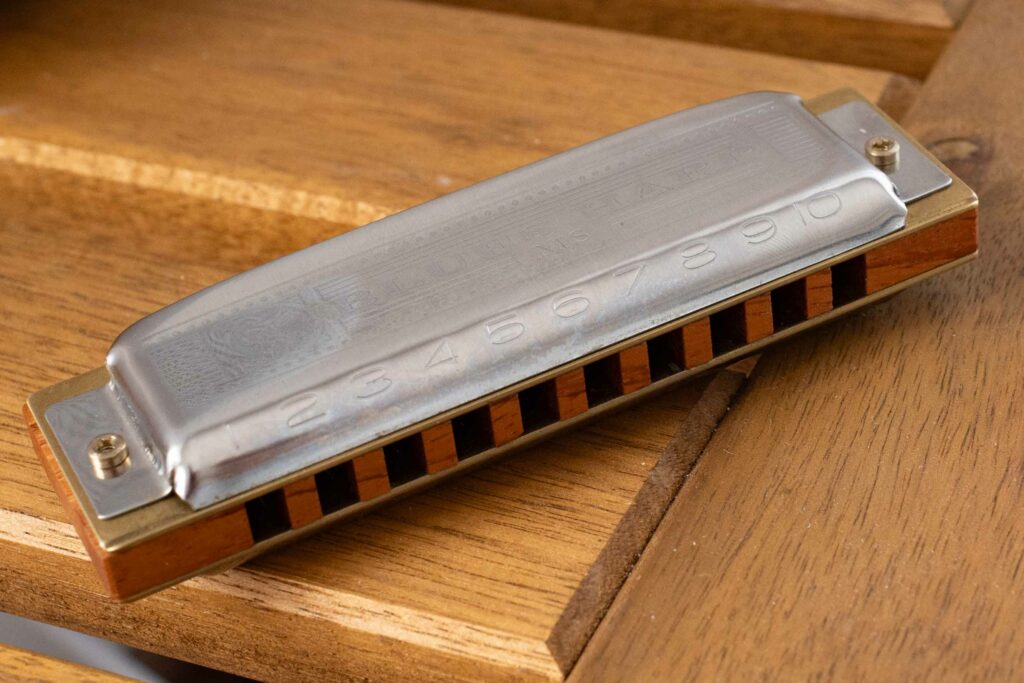
The Bluesharp we’ve tested was bought a few months ago. And it is very good! The main inconvenient is that its wood com leaves a taste of wood on the tongue, but it seems to disappear with time. Apart from that, we were very surprised by its response, sound and global playability.
Out of the box, the playability was good for traditional playing, not for overblows. After a quick setup for chromatic playing, all the bends and overnotes are easily obtained and sound natural.
Definitely a good entry level harmonica for chromatic playing and a very good playability-sound/price ratio.
Special 20 (35€)
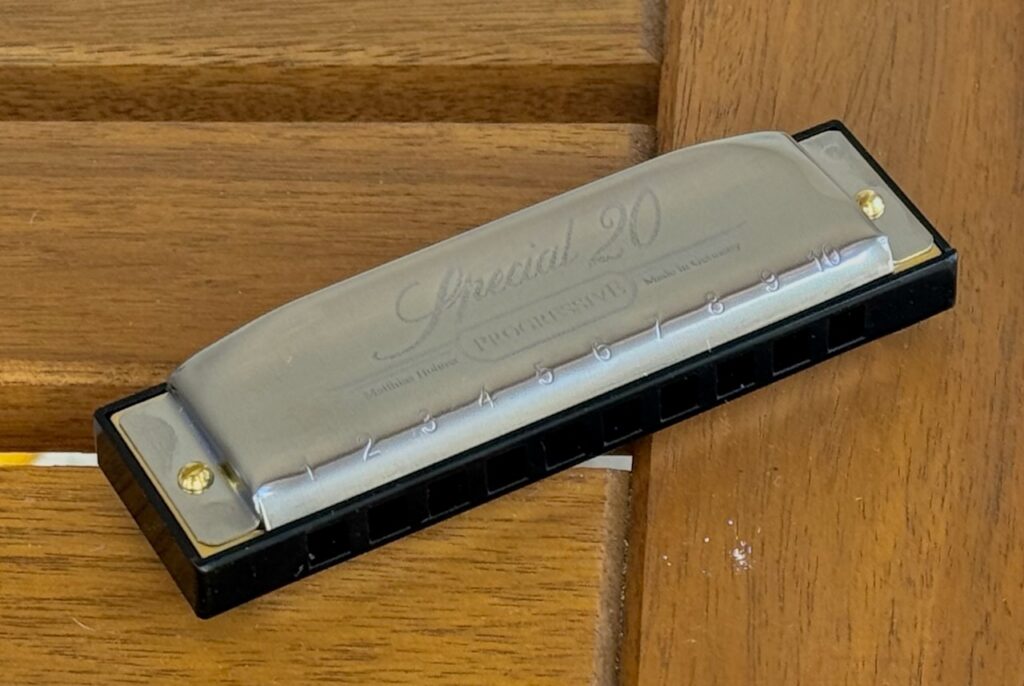
The Special 20 is very often suggested as the “best first harp” and even as the main harmonica by experienced players.
We don’t fully agree with that statement. While it’s true it is not expensive and quite playable, we prefer the sound and construction of the Blues Harp.
The Special 20 sounds a bit dull to our ears and it took us more effort to set it up for overblows and overdraws . Nothing that should prevent anyone from buying a Special 20 of course, but we would tend to recommend either to buy a Blues Harp (if the budget is tight) or to go for a Marine Band Deluxe or a new Golden Melody (see below).
Marine Band Deluxe (49€)

The quality of Hohner harmonica kind of fell down during the 80’s. The harmonicas produced by the factory were not as responsive and airtight as before. Pushed by Steve Baker and Rick Epping, Hohner worked on their processes and machines (they had to re-sharpen or replace their milling tools used to cut the reeds and reed slots). This resulted in far better quality on the whole diatonic line.
Steve Baker also convinced Hohner to take to revisit their most well known product, the Marine Band. The Deluxe is the response to the complaints agains the Classic: the wood comb is sealed (the Classic was not at that time), it is mounted with screws instead of nails. This made the Marine Band Deluxe one of the biggest successes of the firm.
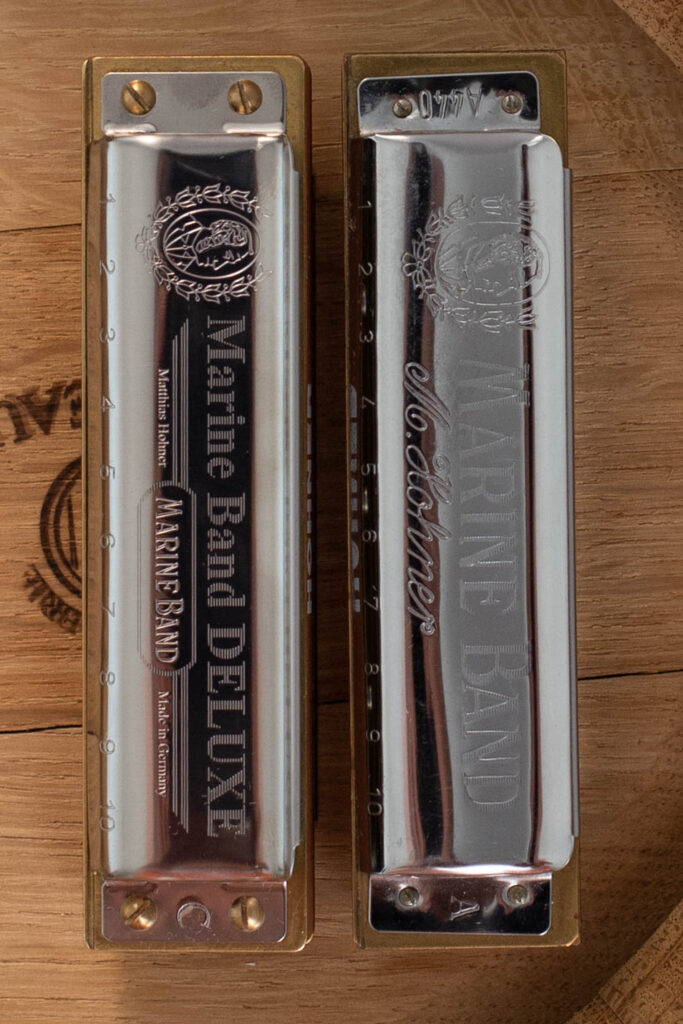
And of course we only can approve the changes. We would just have a minor remark: the 4 screws/bolts, which close the covers (probably designed to remind the player of the construction of the Classic), are not the easiest solution to easily dismount the covers. There are too many of them (2 would be enough) and the chosen screws/bolts are not that easy to use with a screwdriver. It has to be noted we’ve encountered a problem when remounting the covers: there was a “light” between the cover and the reed plates/comb, which produced some leaking. Swapping the Deluxe covers with Crossover ones solved the problem on both harmonicas. We haven’t really understood why.
That being said, this really is great to have a Marine Band with a lasting comb that can easily been gapped.
Another difference with the Classic is the back of the covers, which is fully opened to supposedly allow more sound projection.
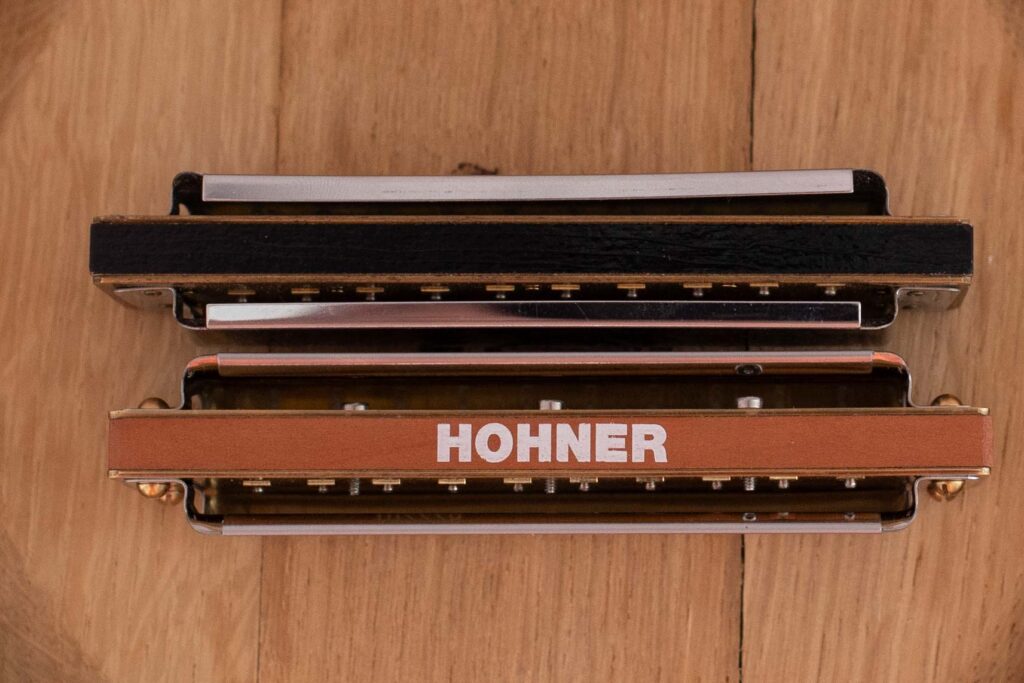
Out of the box, the overblows are not really playable, as usual. Once gapped and treated with nail polish, it is a pleasure to play “the tin sandwich” chromatically.
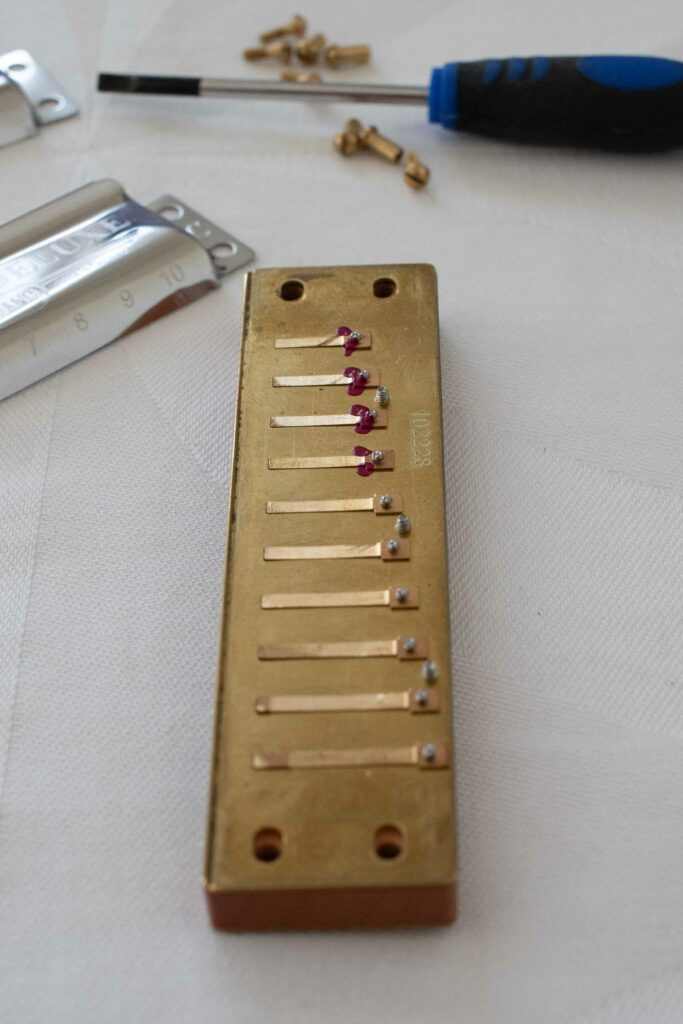
We’ve got the form factor (quite small), the embouchure and the open sound of the Classic and can play all the overblows and overdraws at the same time. Definitely a good evolution of the Classic Marine Band.
Old Golden Melody
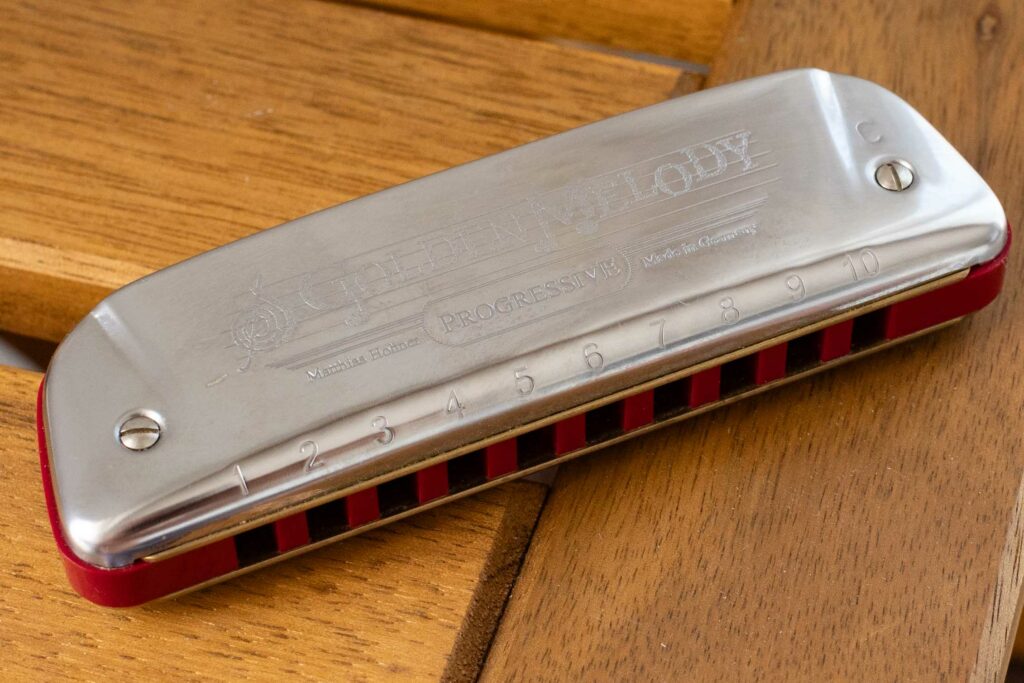
The old Golden Melody is a legend of sort. Its 12-Tone Equal Temperament Tuning is aimed at making melodies in multiple keys sound better (and makes the chords sound a bit harsher as a consequence). It was identified in the 80’s as the best harmonica for overblows, mainly because Howard Levy, who was among the first player to use extensively overblows at that time, was using it.
There was actually nothing in its construction that made it better for overblows, but it’s only the following decades that we understood the major impact of gapping on the playability of the instrument.
The form factor of the old Golden Melody makes it stand apart from the rest of the harmonicas. It’s red comb too. The quality of the plastic is not very good, and the comb is prone to deteriorate with time.

Once setup, the playability is good. All the overblows and overdraws can be obtained easily. But the sound is very mat, we would say even dull. It lacks, in our opinion, the brightness of the Marine Band.
New Golden Melody (48€)
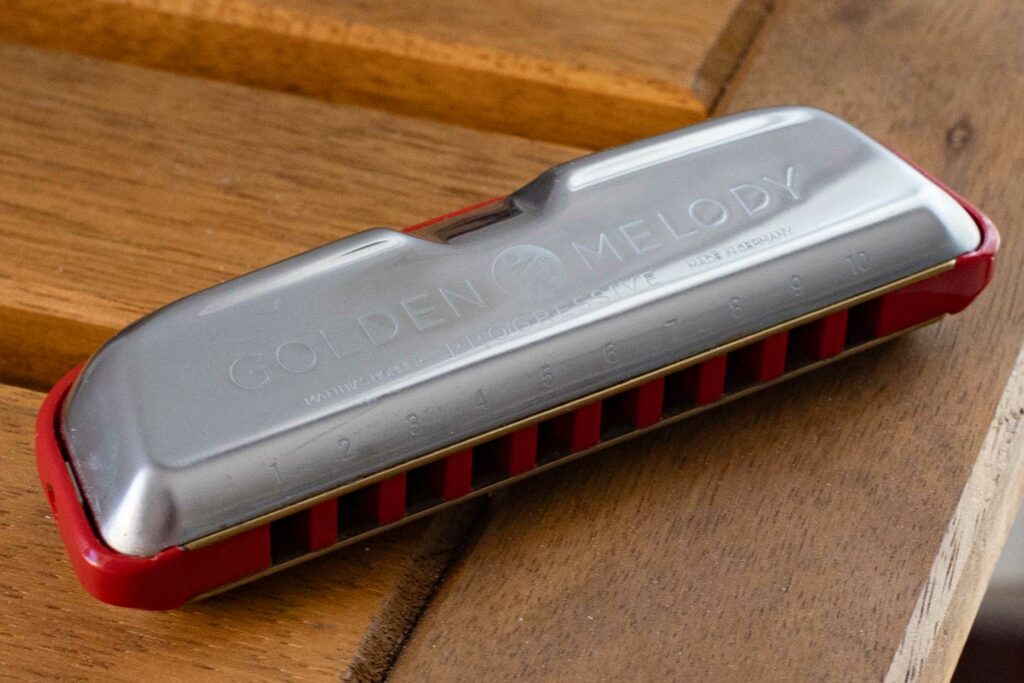
In spring 2023, Hohner decided to take the chance of a necessary change of their machinery to completely rebuild their iconic Golden Melody and decommission the previous version. The launch of the new product came with a massive marketing campaign, teasing a “revolution” in the harmonica world. Hohner had sent New Golden Melody instruments to several players in the world prior to the launch so that they prepared YouTube videos for the launch and they were some major Youtube events to accompany the launch.
As usual with this type of marketing events, all the “endorsed” players praised the new instrument. This was to be expected. What was kind of expected too was a bad reaction from some old Golden Melody lovers. And it did happen too, even more expected: we’ve observed a lot of bad reviews of the new version.
So, what is this new Golden Melody worth?
We’ve bought one in C from Major Pigalle (the best French harmonica shop) and here is our opinion on it/
Its shape clearly is an evolution of the old one but with major changes. The most important one is the an indentation on the top and bottom cover plates in the middle part of the instrument rear. It gives a very specific look and is said to serve as holds for the finger and thumb of the player, but it is not working for us (it might depend on each player grip). We guess this indentation is due to a structural need, linked to the new comb with screws on the sides.
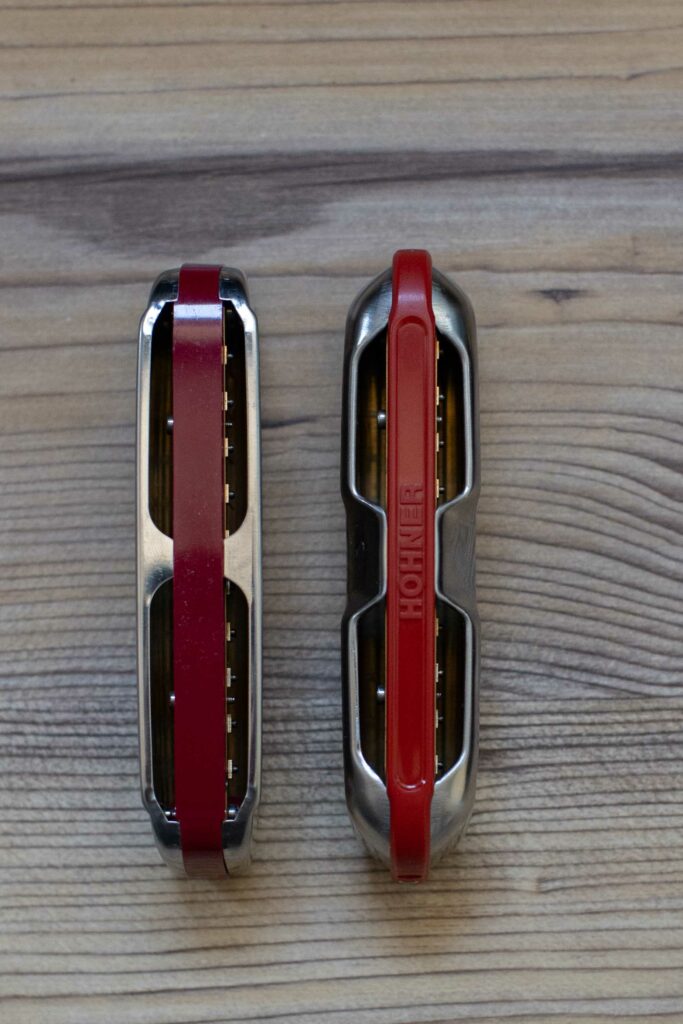
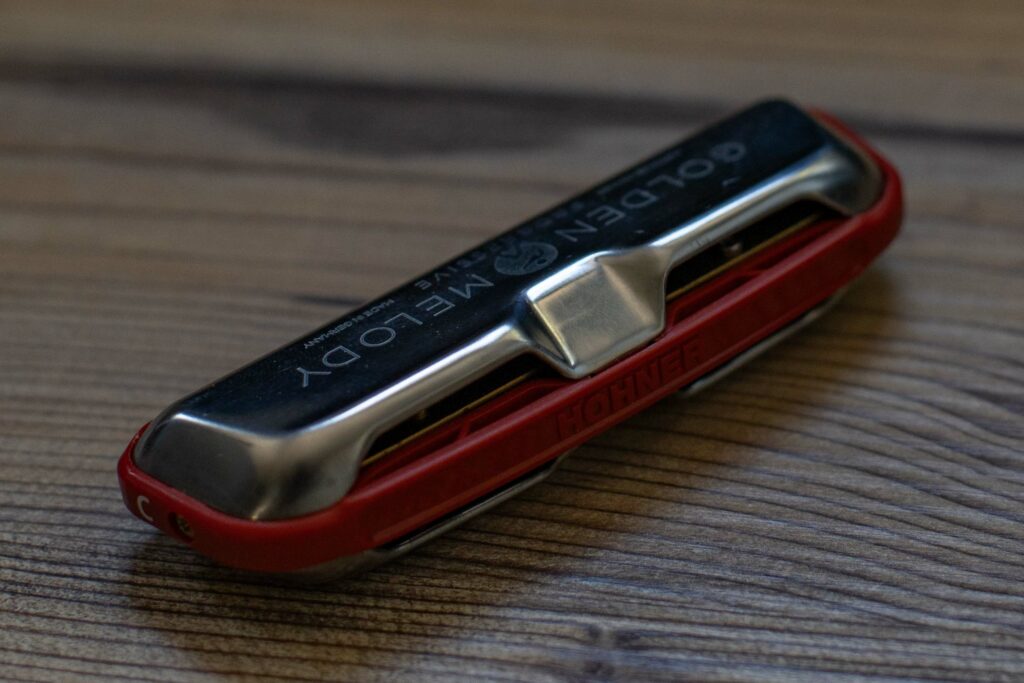
The comb is quite different from any other harmonica comb, with its cover plate tabs on the sides, which go into the comb and are fixed with Torx screws. Having only sides cover plates screws is unique in the harmonica world.
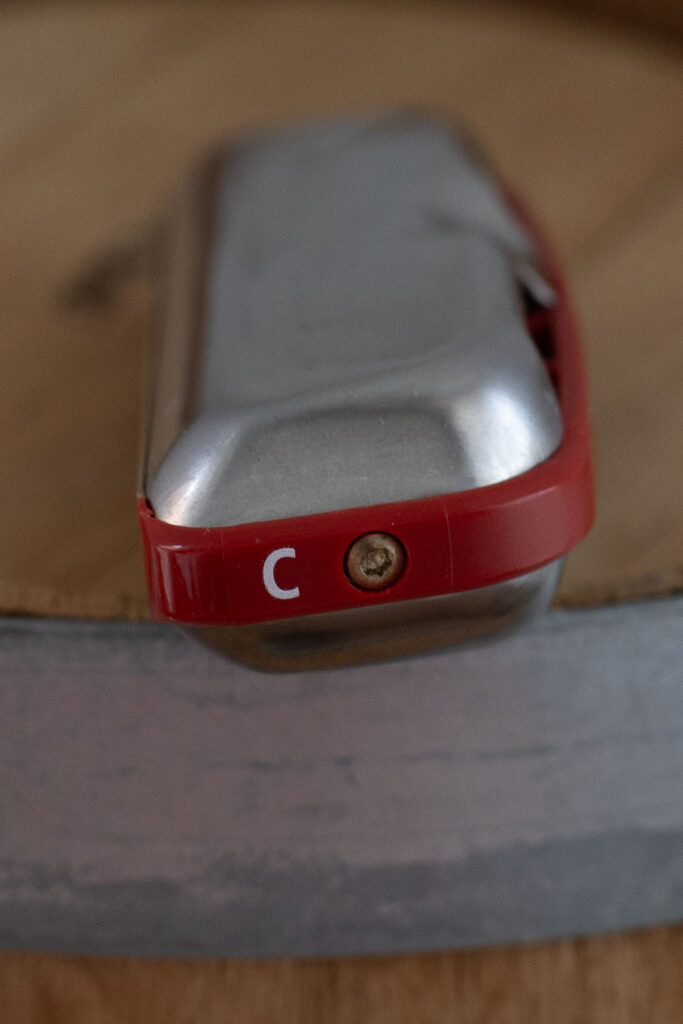
The dismounting/mounting of the cover plates requires to put correctly the tabs into the comb, which might be a bit difficult at first. It is important to do it carefully to keep a good seal of the cover plates on the comb and preserve the harmonica airtightness.
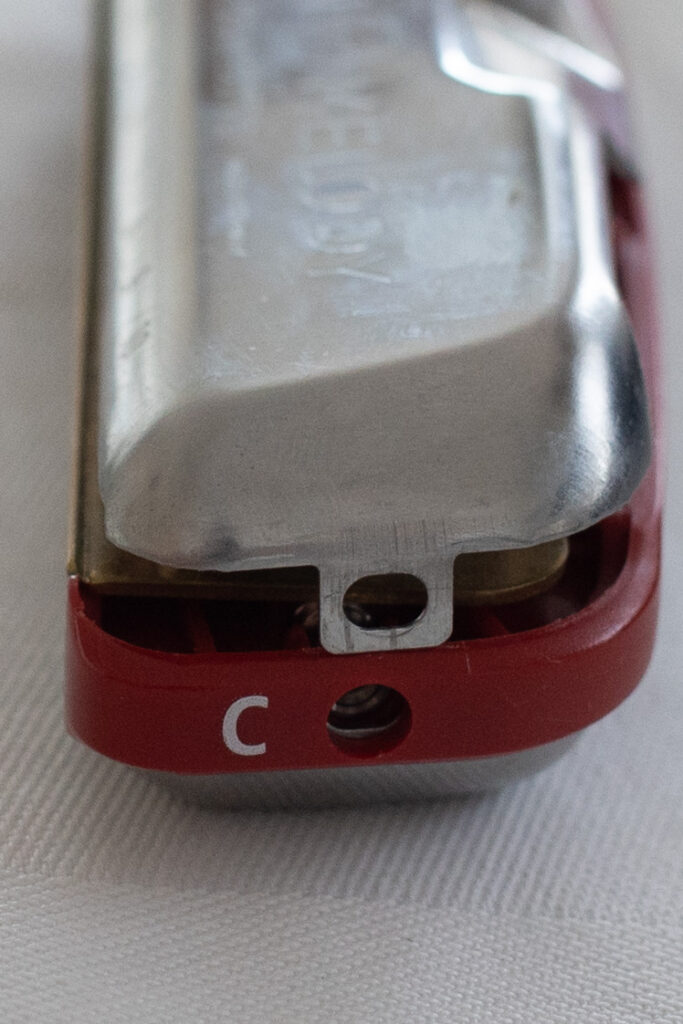
The reeds are the same as the ones mounted on the Marine Band and Progressive Series harmonica. The reedplates are slightly different in terms of holes for the screws.
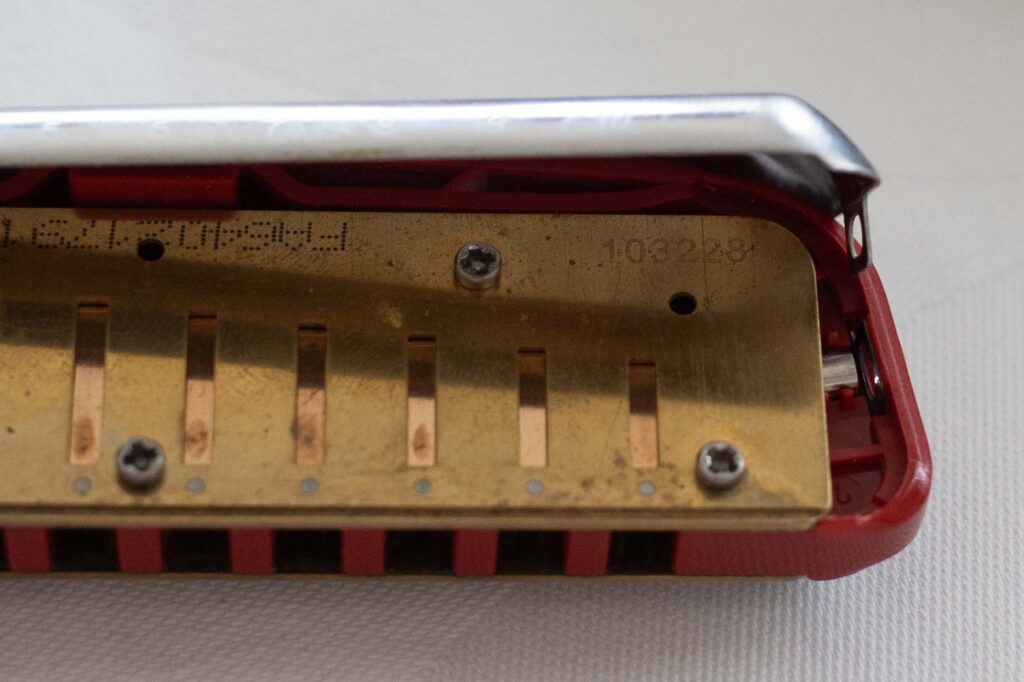
Out of the box the New Golden Melody plays well for traditional playing (bends) but is clearly not setup for overblows.
After setup, the New Golden Melody plays well: overblows and overdraws are easy to obtain, the harmonica is airtight and the sound is rather bright, far brighter than the old Golden Melody.
Here are few phrases with real use of overnotes (the recording might have been better in terms of sound capture):
This new harp from Hohner is a very good evolution of the Golden Melody in design, performances and sound. It is not the revolution the marketing said and we do understand it’s a shame the old one is discontinued for some players, but in our opinion it clearly is superior to the old one. Modern players should be very happy with it.
Update: We’ve bought another New Golden Melody, this time in G and observed it was leaky on the front. Some users have mentioned that type of the leakiness. We’ve solved the problem with a very small bit of chewing-gun in the jonction between the reedplate and the comb.
Rocket Amp (45€)
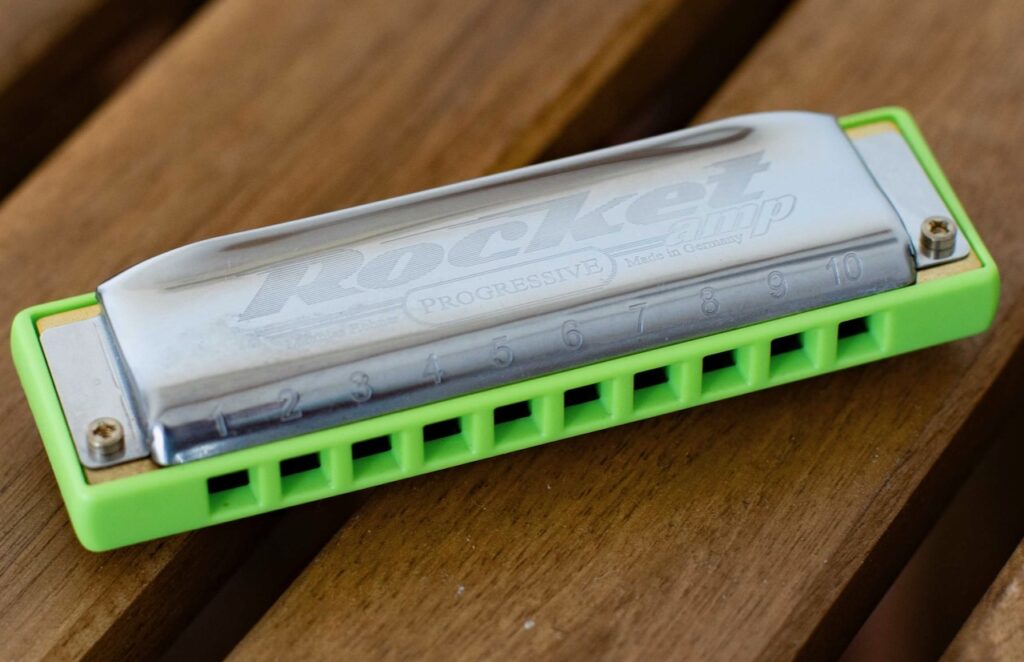
The Rocket is a modern, enhanced Special 20. The Amp model has “closed covers” (no side vents), the goal being to direct the sound towards the mike. The look of the Rocket Amp might seem “toyish” with its green recessed comb but this is actually a well constructed instrument.
Out of the box some overblows are barely obtainable, but not really usable.
Once setup (gapping and nail polish), the Rocket Amp plays nicely. All the overnotes are easily obtainable with a good sound. The airtightness is good.
Here are few phrases with real use of overnotes:
While the playability of the Rocket Amp is very good, we feel the sound of the harmonica is a bit dull to our ears: it lacks brightness. We might thing it is due to its closed covers (for playing through an amp), but we doubt it. In our opinion, the richest the instrument sounds acoustic, the best it will sound amplified. This makes us clearly prefer the New Golden Melody over the Rocket Amp.
Meisterklass (95€)
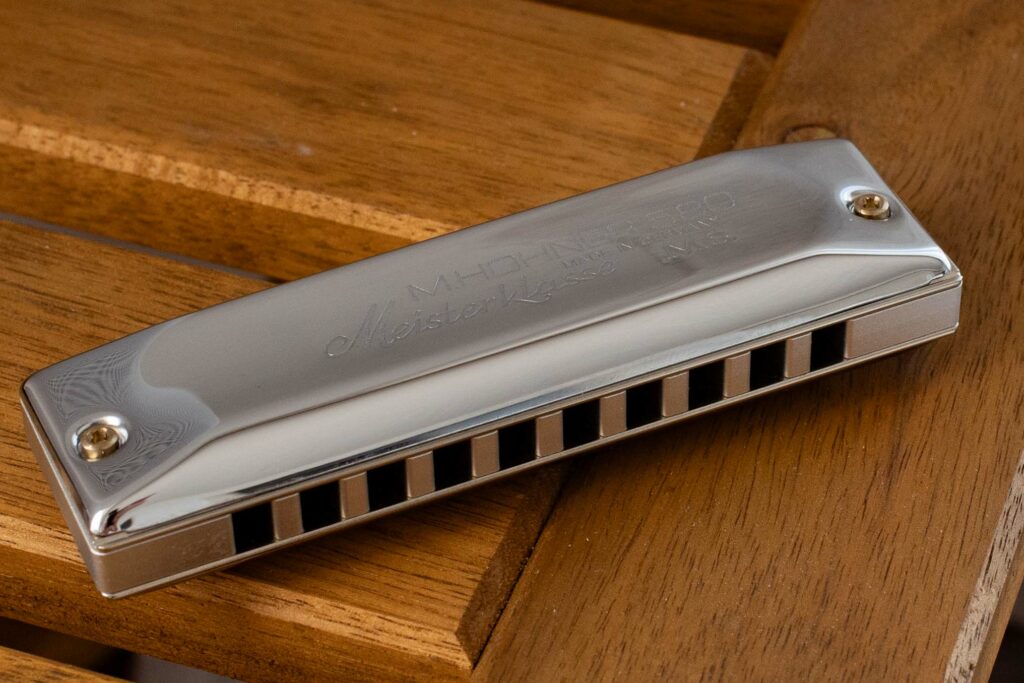
The Meisterklass is the flagship of Hohner diatonic harmonicas. It hasn’t changed since the 90’s.
It has chrome plated covers, an anodized aluminium comb and extra thick reed plates.
Strangely, considering it is a highly priced instrument, the “Hohner” marking doesn’t stay well printed and, even worse, the covers don’t fit well on the back of the comb (you can see the points of contact on the picture below). And it worsens when playing with a tight grip.
The dismantling and remounting of the covers are not very handy.
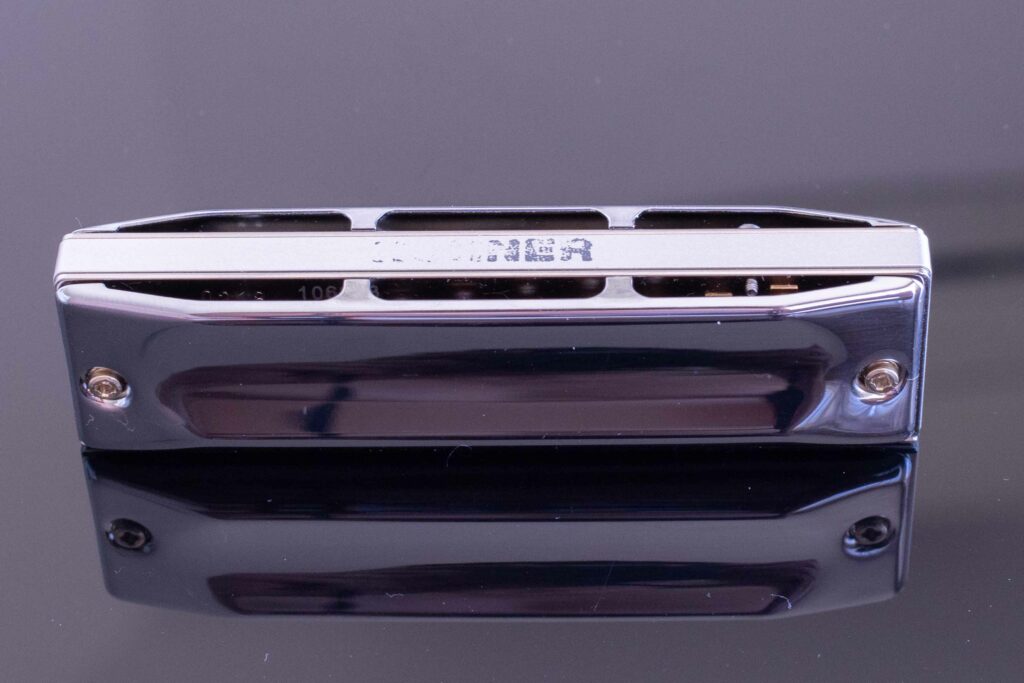
The gaps are quite wide, clearly not aimed at chromatic playing with overblows

Even worse, once gapped the 4, 5 and 6 overblows were squealing when played at low level!
We had to apply nail polish on the blow 4, 5 and 6 reeds, which required a complete dismantling of the instrument.

All these points are quite disappointing for an high end instrument … but …
…
…
… but once gapped and “nail polished” on both the blow and draw reed plates, the instrument sounds very well and is very easy to play! It is actually, in our opinion, the best sounding harmonica of the Hohner diatonic line!!
And this leads to our conclusion…
Hohner is a leader on the market of diatonic harmonicas and it does produced well constructed instruments that can sound well for chromatic playing once gapped and tweaked.
But it doesn’t seem to want to address the new community of modern players and produce a real out of the box overblow harmonica.
The explanation they (un)officially give is that it is not really feasible for big productions and that the market is too small.
It kind of made sense …. till new harmonica brands like Arkia appeared. Arkia in particular is proving that producing R&D efforts on the harmonica comb and new tools makes sense. And it seems to us that the community of modern playing harmonicists is growing.
We can only dream of what a big company like Hohner might create if they turned a fraction of their resources in that direction.
Laurent Vigouroux